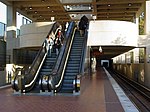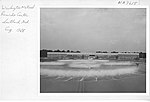Suitland-Silver Hill, Maryland

Suitland-Silver Hill was a census-designated place (CDP) in Prince George's County, Maryland for the 2000 U.S. census. The census area included the separate unincorporated communities of Silver Hill and Suitland, and other smaller communities. The population was 33,515 at the 2000 census. For the 2010 census, the CDP was separated into Silver Hill and Suitland. The community was named for a 19th-century landowner, State Senator Samuel Taylor Suit and his estate. The Suitland-Silver Hill area was known as having one of the highest crime rates in Prince George's County. The Suitland Manor neighborhood, located at the intersections of Maryland Route 218 (Suitland Road) and Maryland Route 458 (Silver Hill Road) was targeted for demolition by the county because of the frequent occurrence of violent crime and drug trafficking in the area. As of late 2005, Prince George's County was in the process of purchasing all of the apartment buildings on the three roads that make up the neighborhood (Homer Avenue, Hudson Avenue, and Huron Avenue), so that they could be demolished and replaced with mixed commercial and residential properties. In 2005, seven people were shot and killed in this three-block area, and another was killed in a hit and run. Suitland Manor is directly across Suitland Road from the Suitland Federal Center, which houses the national headquarters of the United States Census Bureau, among other government agencies. Suitland is currently poised to take advantage of development and multiple economic engines being established throughout this area of Prince George's County. Revitalization is being attempted in the area by different community organizations as they strive to undo the damage done to the reputation of the area by the former "pay to play" politics that existed in Prince George's County. The new administration of the Suitland Citizens Association has made great strides in rebuilding the trust of the local community and the Suitlandfest Community Development Corporation hosts and designs activities, programs and events that try to bring forth positive change, enhance the education, recreation, health and fitness, artistic development, social and economic conditions in this at-risk but growing area. Suitland is alleged to be one of the most dangerous places in the county but current crime statistics do not support that contention . Steny Hoyer, House Majority Leader of the United States House of Representatives, moved to the area in his teens and attended Suitland High School.
Excerpt from the Wikipedia article Suitland-Silver Hill, Maryland (License: CC BY-SA 3.0, Authors, Images).Suitland-Silver Hill, Maryland
Silver Hill Road,
Geographical coordinates (GPS) Address Nearby Places Show on map
Geographical coordinates (GPS)
| Latitude | Longitude |
|---|---|
| N 38.850555555556 ° | E -76.923611111111 ° |
Address
Silver Hill Road
Silver Hill Road
20233
Maryland, United States
Open on Google Maps







